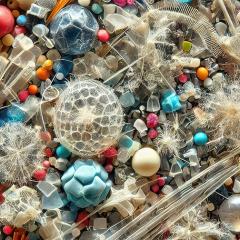Evaluating infant oral exposure to micro and nanoplastics - Laura Puente
Microplastics (MPs) are small-sized plastics sized from 5 mm to 1 μm, while smaller plastics are considered nanoplastics (NPs) and are below 1 μm in size. In humans, exposure and possible negative health effects due to micro and nanoplastics are still being studied. Infants are particularly vulnerable to potential exposure to micro and nanoplastics due to the use of plastic feeding and storage containers as well as the use of commercially manufactured infant formula. Recent studies have reported MPs in baby bottles and breast milk storage bags, infant formula, breast milk and placenta suggesting exposure form early stages. However, there are concerns about the accurate detection and quantification of micro and nanoplastics due to the lack of standardisation, limitations and uncertainties associated with the different methods used in literature which translate into possible overestimation of exposure from these sources. The general aim of this research project is to evaluate infant oral exposure to micro and nanoplastics potentially originated from the use and consumption of infant formula, breast milk and breast milk storage/feeding containers and addressing matrix interferences that affect micro and nanoplastic analysis.
Please note, this is a Student Progress Review presentation

